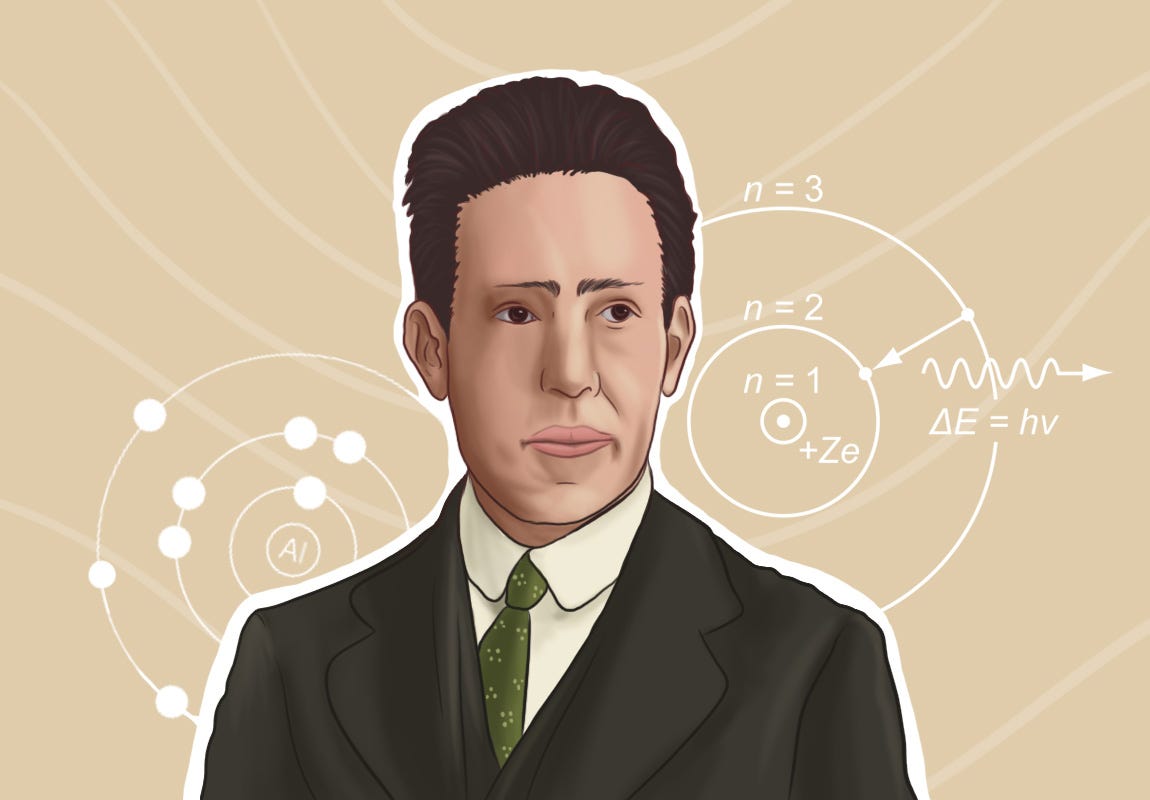Niels Bohr was a Danish physicist well known for his works on atomic theory. He is widely regarded as one of the foremost physicists of the 20th century. Bohr was the first scientist to apply the quantum concept to the problem of atomic and molecular structure.
Niels Henrik David Bohr was born on October 7, 1885, in Copenhagen as the second of three children of Christian Bohr and Ellen Adler. His father was a professor of physiology at Copenhagen University, and his mother was the daughter of a prominent Jewish banker.
Bohr, with his brother Harald, grew up in an environment favourable for developing his genius. His father was an eminent physiologist who was nominated twice for the Nobel Prize.
Bohr completed his schooling at Gammelhom Grammar School in 1903. From his school days itself, he was interested in physics. He enrolled at Copenhagen University in 1903 and came under the guidance of Professor C. Christiansen, a highly renowned physicist. Niels took his Master’s degree in 1909 and his Doctorate in 1911.
In 1908, while Bohr was a student at the university, the Academy of Sciences in Copenhagen announced a gold medal for finding the solution to a scientific problem. Niels took up the challenge and spent hours in his father’s laboratory for experimenting and the theoretical investigation of the surface tension by means of oscillating fluid jets. He was awarded the gold medal for his research, and the findings were published in the Transactions of the Royal Society in 1908.
On August 1, 1912, Niels married Margrethe Norlund. It was a happy marriage, and throughout his life, Margrethe was his most trusted advisor. The couple had six sons. Aage N. Bohr, their fourth son, shared the Nobel Prize for Physics in 1975.
Bohr’s contributions to science
In 1911, Niels Bohr travelled to England to work with J J Thomson at the Cavendish Laboratory, University of Cambridge. However, Niels failed to impress J J Thomson with his experiments.
Bohr received an invitation for post-doctoral research with Ernest Rutherford at the University of Manchester. His first contribution to the emerging idea of quantum physics started during this period. In the beginning, he carried out a theoretical piece of work on the absorption of alpha rays. These studies were published in the Philosophical Magazine in 1913.
In recognition of his works on atomic structure, he was awarded the Nobel Prize in Physics in 1922.
In the same year, Niels Bohr started to study the structure of atoms on the basis of Rutherford’s discovery of the atomic nucleus. He introduced the concepts borrowed from quantum theory developed by Max Planck and presented a picture of atomic structure, which came to be known as the ‘Bohr model’. While there were further additions and improvements to Bohr’s atomic model, it still serves as an elucidation of the physical and chemical properties of elements.
Between 1913 and 1914, Bohr was offered a professorship in physics at Copenhagen University. He had a similar appointment at the Victoria University in Manchester in between 1914 and 1916. In 1916, he returned to the Copenhagen University. At that time, the physics course at the Copenhagen University was delivered out of the cramped quarters of the Polytechnic Institute. In order to have better infrastructure facilities, Niels Bohr wrote a letter to his faculty asking for the establishment of an Institute of Theoretical Physics.
Niels Bohr escaped to Sweden during the Nazi occupation of Denmark during World War II.
The Institute for Theoretical Physics was inaugurated in 1921. In his inauguration speech, Niels Bohr expressed his ambition to make the institute a place where the young generation of physicists could propose fresh ideas. Within a short span of time, the institute achieved these goals.
Bohr’s research experiments at the institute were directed at the constitution of atomic nuclei and their transmutations and disintegrations. Apart from his works on atomic theory, Bohr contributed to the clarification of problems encountered in quantum physics by developing the concept of complementarity.
Niels Bohr escaped to Sweden during the Nazi occupation of Denmark during World War II. He spent the last two years of war in England and America, where he was associated with the Atomic Energy Project. In his later years, he devoted his life to the peaceful application of atomic physics. His views were expressed in his Open Letter to the United Nations on June 9, 1950.
Niels Bohr served as president of the Royal Danish Academy of Sciences, president of the Danish Cancer Committee, and chairman of the Danish Atomic Energy Commission. In recognition of his works on atomic structure, he was awarded the Nobel Prize in Physics in 1922.
Niels Bohr passed away on November 18, 1962, in Copenhagen.
Thank you for listening. Subscribe to The Scando Review on thescandoreview.com.
Happy Teaching!














Niels Bohr: The Man behind the Bohr Model